It’s a common occurrence for predators to pay a price for their furry meal.
1/640, f/8, ISO 640, Canon 7D, 100-400 @ 210 mm, not baited, set up or called in
Two mornings ago we came across this coyote hunting along the north side of the Antelope Island causeway as it headed east. It was completely unconcerned about the close presence of my pickup but it seemed to be worried about something back toward the island as it was constantly stopping and looking in that direction. It was walking fast as it sniffed and investigated potential prey under the thin layer of snow. It was a cloudy morning so the light was poor but I thought the behavior I photographed was interesting (despite the fact that I got very little eye contact).
Here it found a spot with some potential. I believe it could smell the rodent under the snow, probably at the entrance to its burrow.
1/640, f/8, ISO 640, Canon 7D, 100-400 @ 220 mm, not baited, set up or called in
It poked around the spot for a few seconds and then removed a stick that was in the way.
1/500, f/7.1, ISO 640, Canon 7D, 100-400 @ 220 mm, not baited, set up or called in
Then the coyote started to dig in earnest. The temps were below freezing and I expected the soil to be frozen under the thin snow layer but it wasn’t and the coyote moved quite a bit of dirt as you can see by the eventual depth of the hole.
1/500, f/7.1, ISO 640, Canon 7D, 100-400 @ 220 mm, not baited, set up or called in
When it pulled its head out of the hole it had its furry prize. I believe the rodent to be a mouse rather than a vole due to the length of the tail and the almost white ventral surface (that you can only see in the second to the last shot).
From the way the coyote handled the mouse I could tell it was very aware of the possibility of being bitten. Here the mouse is being grasped at the rear end and the mouse might very easily twist around and bite the coyote’s nose so…
1/500, f/7.1, ISO 640, Canon 7D, 100-400 @ 220 mm, not baited, set up or called in
it deliberately dropped the mouse to get a safer hold (this shot isn’t very sharp for some reason).
1/500, f/7.1, ISO 640, Canon 7D, 100-400 @ 220 mm, not baited, set up or called in
When it picked the mouse up again it was being held by the incisors between the canine teeth. That was a mistake because it allowed the mouse to bite (which it did)…
1/500, f/7.1, ISO 640, Canon 7D, 100-400 @ 220 mm, not baited, set up or called in
so the coyote dropped the mouse and immediately…
1/500, f/7.1, ISO 640, Canon 7D, 100-400 @ 220 mm, not baited, set up or called in
grimaced in pain. I have several more shots of the coyote reacting to the bite and I believe it was bitten on the end of its tongue.
1/500, f/7.1, ISO 640, Canon 7D, 100-400 @ 220 mm, not baited, set up or called in
But eventually the coyote got its revenge as it chomped down on the mouse (you can see the white underside here)…
1/500, f/7.1, ISO 640, Canon 7D, 100-400 @ 220 mm, not baited, set up or called in
and then swallowed it whole (as they always do).
This was a frustrating sequence to photograph for me because I missed a lot of interesting shots – including the original pounce on the mouse burrow entrance, the mouse falling out of the coyotes mouth and several other images I’d normally get. Some of those shots were missed because I was driving (something important always seems to happen when I’m putting the pickup in park and turning off the ignition) and by mistake I was using a much slower memory card so my burst rate was unusually slow.
Excuses, excuses…
Ron


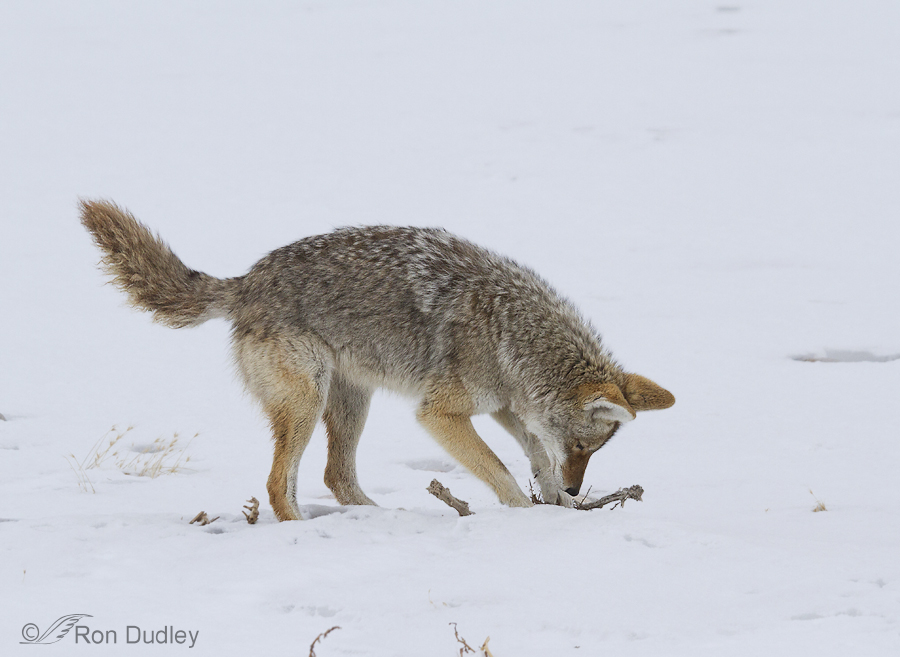
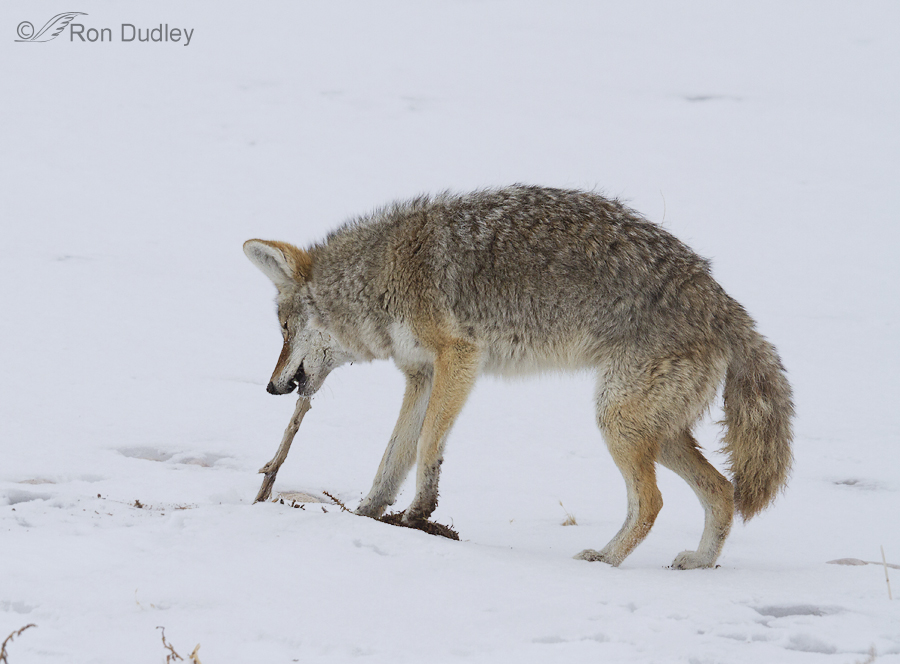
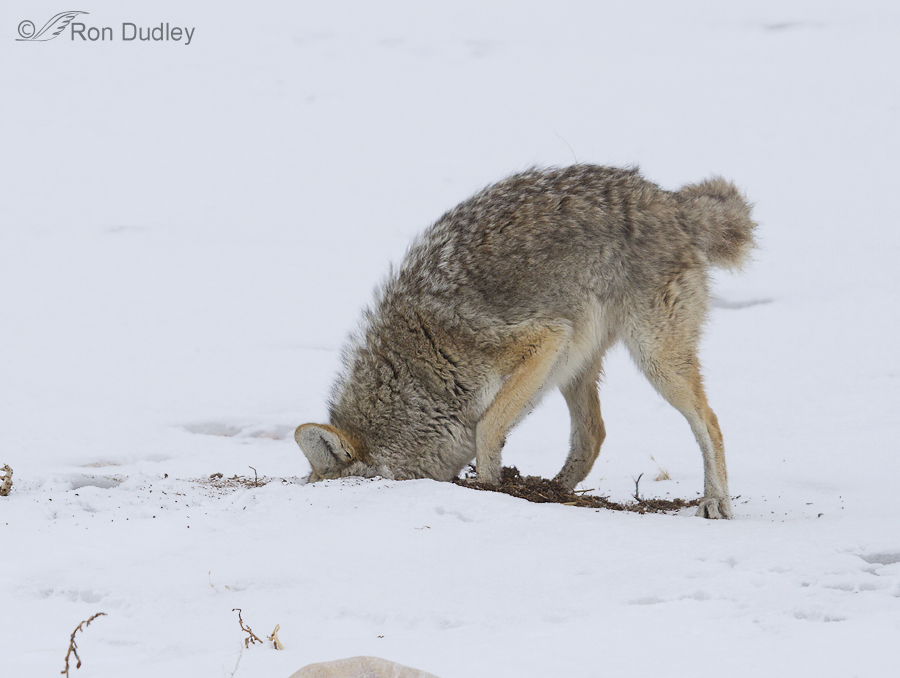
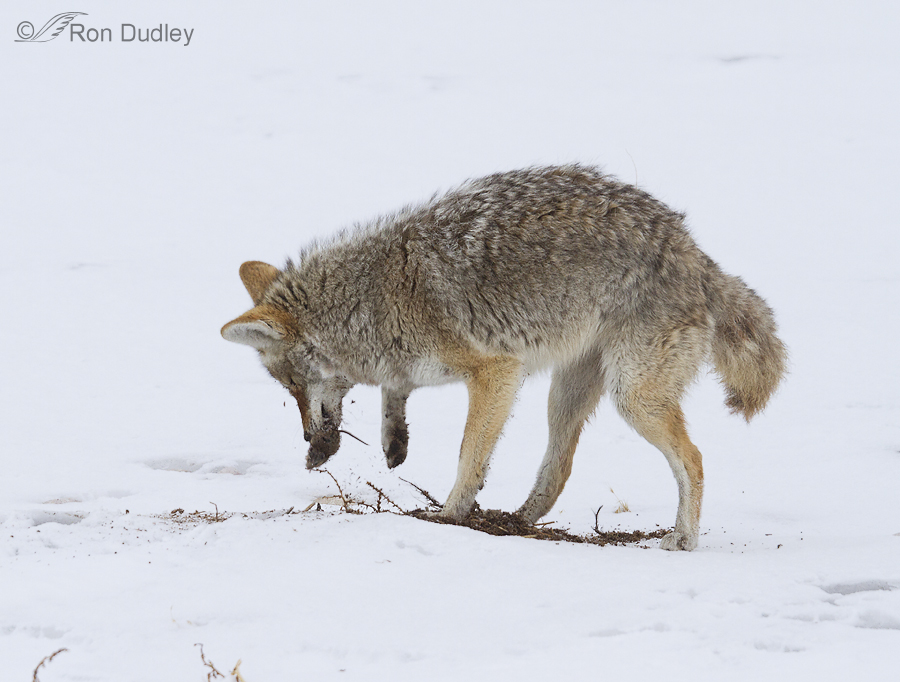
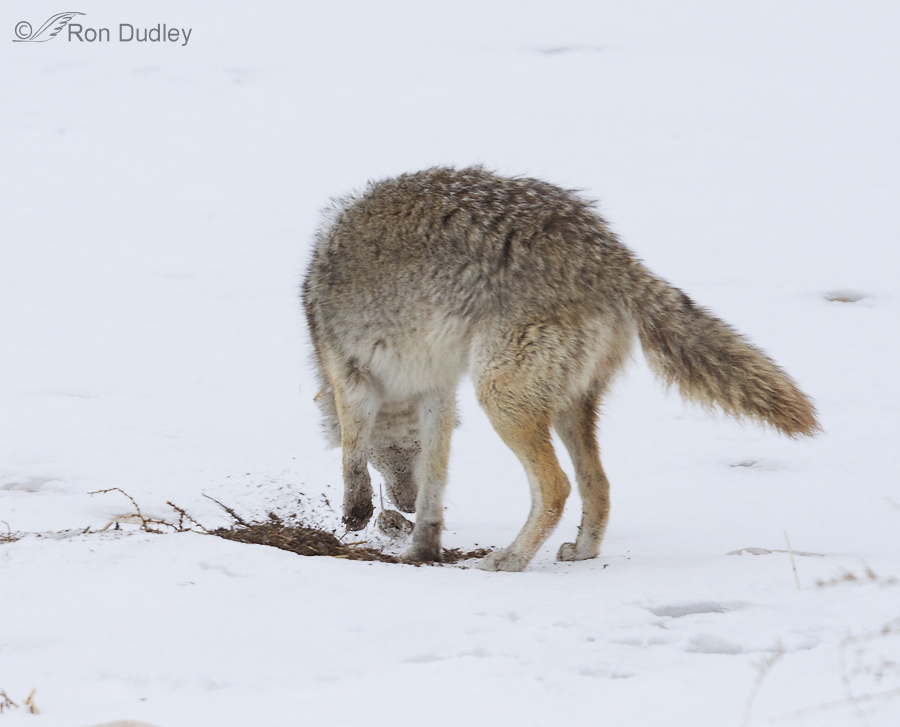
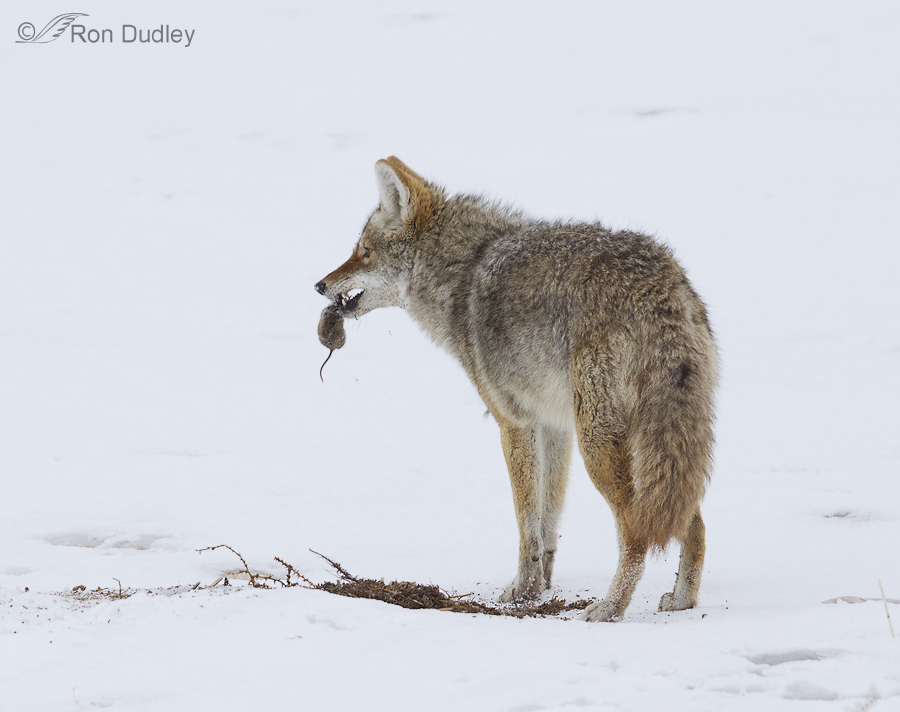
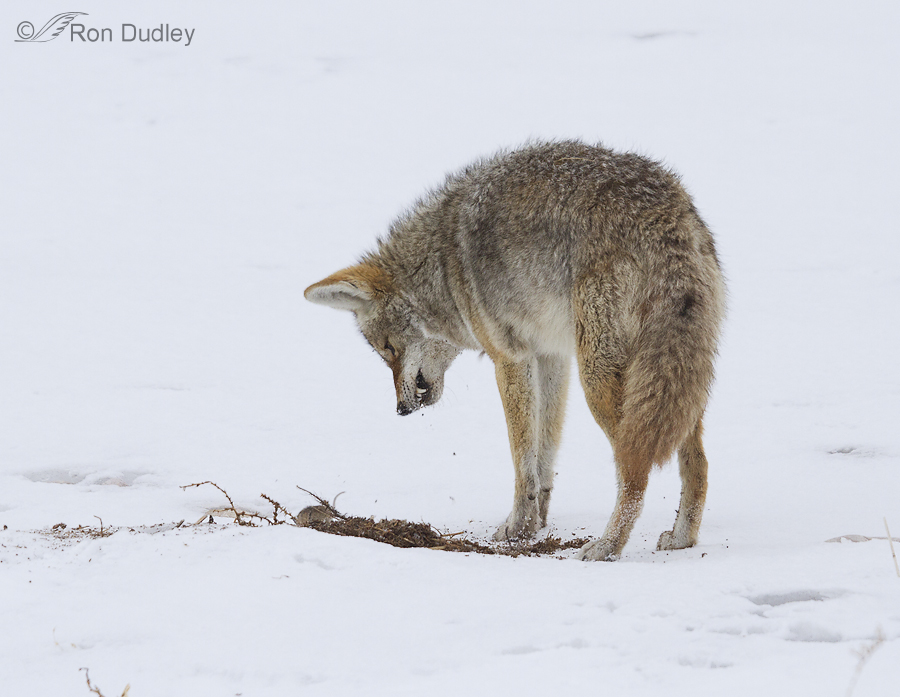
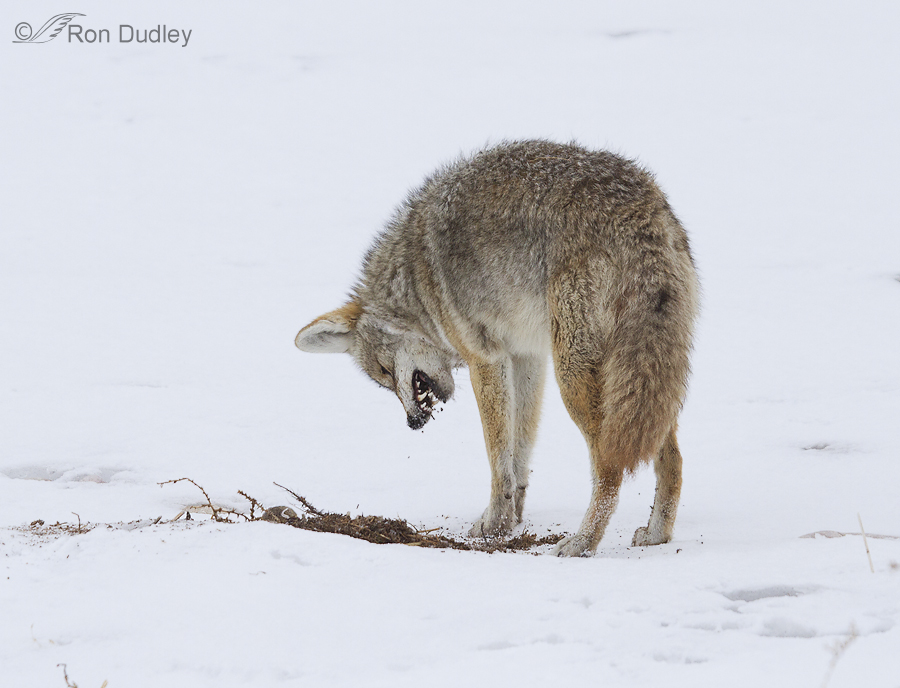
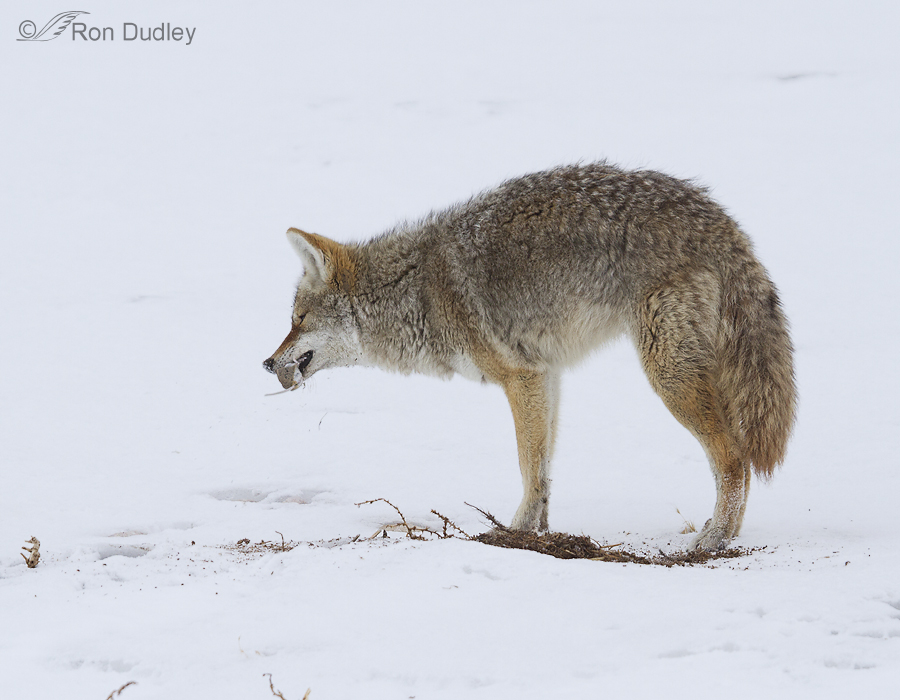
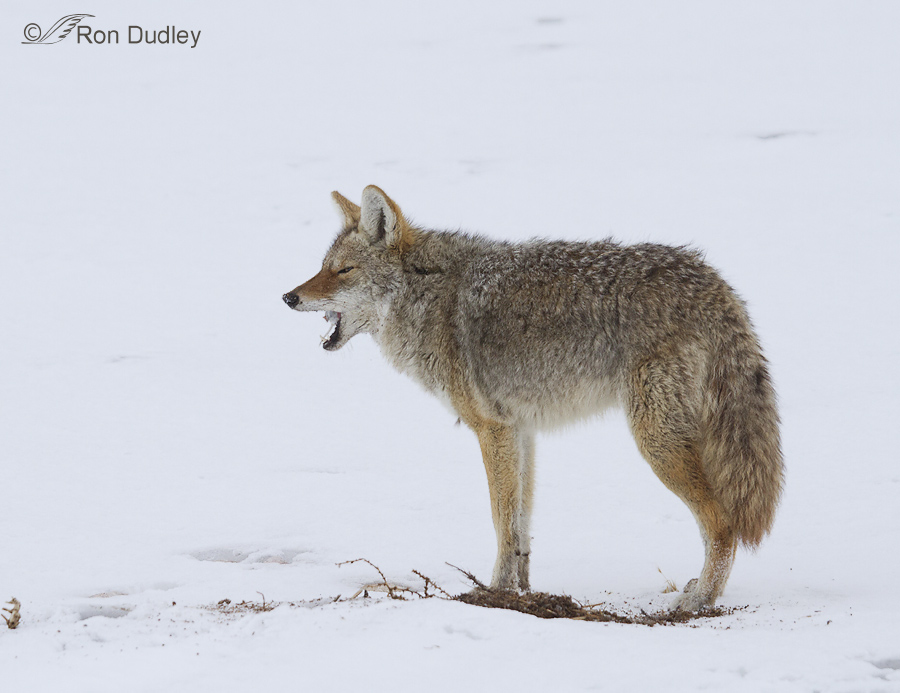
Yeah, but… it’s still a great series of photos on a subject I really haven’t thought about before.
Poor beasts! One gets bitten and the other gets eaten. Thanks for the compelling images and another entertaining story.
That is the second time I have heard about speed with regards to the memory card. I like the shots-entertaining but must admit I hoped the mouse would have got away.
Yowch! Poor coyote. I guess I should feel sorry for the eaten? Great pictures!
Ron, it’s interesting to hear of your travails while shooting this drama. One would never suspect there was a missed opportunity in this great sequence.
I have plenty more of those “travails”, Mike – believe me…
A fine story told through these superb images, Ron. I love the Coyote – a close relation to our own Red Fox (Vulpes Vulpes).
Thank you, Christian.
OWWWW!
Yup, it hurt, Patty.
A fellow rehabilitator in WI got a barred owl into care that then died; on necropsy, she could see what was apparently a rodent bite in the esophagus … that mouse was swallowed whole (as they pretty much always do) but apparently prematurely. We’ve also seen hawks and owls with apparent prey bites on their feet – these can get pretty nasty. And thus many falconers who use their birds to hunt squirrels train the birds to wear leather ‘chaps’ on their legs and to protect the top of their feet from those very powerful squirrel teeth. Definitely no such thing as a free lunch in the predator-prey cycle! Can’t hardly blame the prey, though!
Fascinating anecdotes, Louise. Thank you.
Great sequence, Ron. Gets me to thinking more about the quality of the SD card I’m using since I often shoot in burst mode. What’s the minimum I should look for when buying cards? I buy ones labeled “premium” or “professional” (even though I’m an amateur!).
The one in my camera right now is 20mb/sec., and the ones I just bought were 30mb/sec. Are all the older ones with no specified mb/sec probably too slow?
Thanks in advance for your help and keep sharing your great work and stories!
Nancy, The cards I normally use are 90mb/sec (Sandisk Extreme Pro). Slower cards really slow down burst rate. If it were me I’d definitely purchase the fastest cards that can be supported by my camera.
Wow, 90mb! I’ll need to check what my camera (Nikon D90) supports. Thanks much for your reply.
Great sequence Ron, very interesting too about the mouse biting back… Ouch, on the end of the tongue!
I know, Ed. I keep thinking of how painful it can be when I bite my own tongue!
Another great sequence Ron ! Can’t help feel sorry for the mouse though…and as the Coyote experienced “there’s no such thing as a free lunch”.
Well said, John.